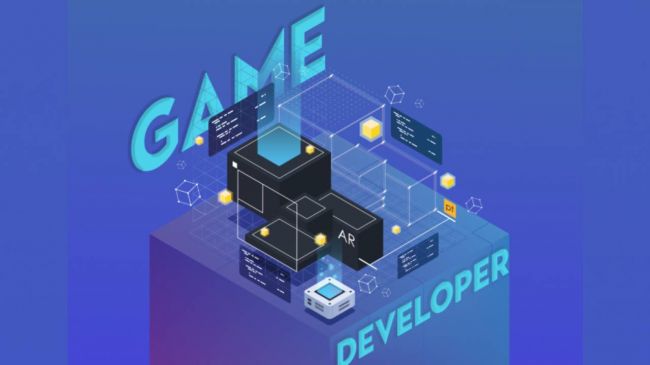On This Page
- Core principles of blockchain gaming
- Development workflow and stack
- Balancing decentralization and performance
- Tokenomics and player retention
- Security and compliance realities
- User experience and onboarding
- Measuring success beyond token price
- Collaboration across disciplines
- The sustainable future of blockchain gaming
The intersection of blockchain and gaming is not hype anymore. Studios adopt distributed architectures to enable new player economies and transparent asset ownership. A capable blockchain game development services provider builds this foundation with verifiable smart contracts, interoperable tokens, and security-tested infrastructure.
Core principles of blockchain gaming
Fundamentally, blockchain substitutes a shared ledger for a central database. Players can audit the signed records created by each in-game transaction.The concept seems technical, but its benefits are practical. When executed correctly, it grants players real control over assets and reduces disputes between users and publishers.
The key functional pillars include:
- Tokenized assets: instead of being database entries, goods, money, and collectibles exist as transferable tokens.
- Trades, upgrades, and staking mechanisms are automatically managed by smart contracts, which are programmable rules.
- Transparency: all state modifications may be independently verified, avoiding unintended algorithmic benefits.
- Interoperability: secondary markets are created when assets may flow between ecosystems.
These fundamentals reshape how games sustain engagement. Instead of temporary achievements, players own digital property that persists beyond one title.
Development workflow and stack

Building a blockchain game still follows standard game production phases but includes on-chain layers and audit steps. The overall flow typically looks like this:
- Concept validation. Identify the gameplay loop where ownership adds value. Not every genre benefits equally.
- Token economy design. Define supply limits, utility, and exchange logic for tokens or NFTs.
- Smart contract prototyping. Write and test contracts in frameworks like Hardhat or Foundry before mainnet deployment.
- Frontend and game client integration. Connect wallets and contract calls through secure middleware.
- Security auditing. Engage external auditors to review vulnerabilities.
- Testnet phase. Run economic simulations to ensure stability.
- Mainnet launch and live operations. Monitor gas costs, adjust reward curves, and manage player onboarding.
Following this order prevents costly redeployments and maintains community trust.
Balancing decentralization and performance
Full decentralization introduces latency and transaction fees. To maintain smooth gameplay, developers mix on-chain logic with off-chain services. Core actions such as combat or movement stay local, while ownership events settle on chain asynchronously. This hybrid model allows responsive gameplay without sacrificing verifiability.
Typical strategies for performance optimization:
- Use sidechains or Layer-2 networks for cheaper, faster settlement.
- Cache noncritical data in traditional databases and synchronize periodically.
- Batch multiple in-game transactions into one blockchain call.
- Apply lightweight cryptographic proofs instead of full data writes.
The right balance depends on genre, audience, and target devices. Casual mobile titles usually prefer semi-centralized solutions to preserve low latency.
Tokenomics and player retention
Whether a blockchain game succeeds or fails depends on its economy design. Sustainable tokenomics puts long-term usefulness ahead of short-term financial gain. This economic dimension is one of the most significant ways in how crypto is changing game development - it forces designers to create systems where items have real scarcity and permanence, fundamentally altering player motivation from temporary engagement to long-term investment. When the gameplay itself is still fun after the money novelty wears off, players stick around.
A balanced economy should ensure:
- Rewards grow with contribution, not random luck.
- Token sinks offset emissions to prevent inflation.
- Governance incentives encourage active participation.
- Entry costs stay reasonable to attract new users.
Game designers must coordinate closely with economists and blockchain engineers. Numbers alone cannot replace engaging mechanics.
Security and compliance realities
Smart contracts are immutable once deployed. Bugs translate directly into financial losses. Teams that approach development like traditional game coding risk irreversible damage. Security therefore becomes an ongoing discipline, not a milestone.
Essential precautions include:
- Independent code audits before every major release.
- Multi-signature wallets for treasury management.
- Continuous monitoring for suspicious wallet behavior.
- Adherence to regional financial and data regulations.
Players notice when safety is taken seriously, and it influences brand credibility more than marketing claims.
User experience and onboarding
Wallet management, gas fees, and key storage can intimidate newcomers. A successful blockchain game hides technical friction behind familiar UX patterns. Seamless onboarding transforms complex infrastructure into a simple sign-in.
Practical UX solutions:
- Embedded custodial wallets for first-time users.
- Gas fee abstraction using meta-transactions.
- Clear tutorials explaining asset transfers.
- Optional linking to external wallets for advanced players.
Accessibility expands audiences beyond crypto natives and supports steady retention metrics.
Measuring success beyond token price
The market initially measured blockchain game success by token appreciation. Mature teams now track engagement, retention, and revenue per active user instead. A healthy project shows consistent playtime growth and community participation even during market downturns.
Core performance indicators worth tracking:
- Daily active wallets executing gameplay actions.
- Conversion from guest users to wallet owners.
- Volume of peer-to-peer trades relative to bot activity.
- Smart contract gas efficiency over time.
These metrics reflect real utility rather than speculation.
Collaboration across disciplines
Blockchain game creation requires cross-functional expertise. Game designers, solidity engineers, economists, and compliance officers must collaborate daily. Misalignment between these groups is the most common source of launch delays.
To keep coordination smooth:
- Maintain a shared documentation hub describing contract logic in plain language.
- Schedule regular reviews between economy designers and developers.
- Run internal testnets accessible to nontechnical staff for early feedback.
- Encourage transparent post-mortems after each milestone.
Strong communication bridges cultural gaps between creative and technical teams.
The sustainable future of blockchain gaming
The industry is moving from hype to craftsmanship. Studios now favor long-term communities over speculative mints. Technologies mature, tooling improves, and regulations provide clearer boundaries. The next generation of blockchain games will emphasize depth and persistence rather than quick financial gain.
Post Comment
Be the first to post comment!





